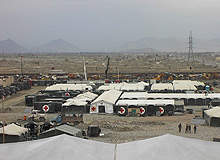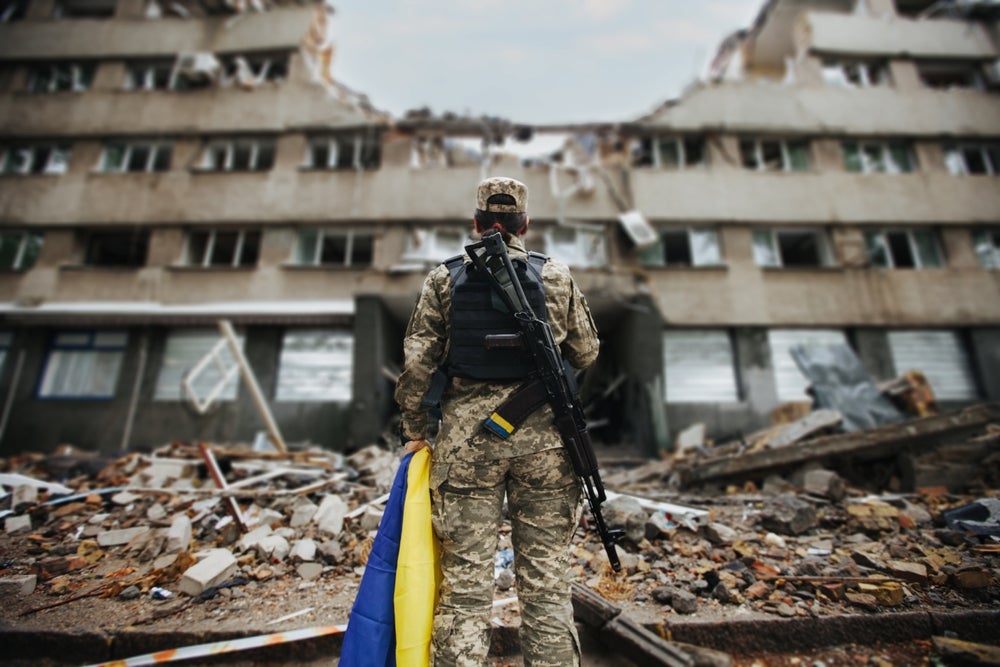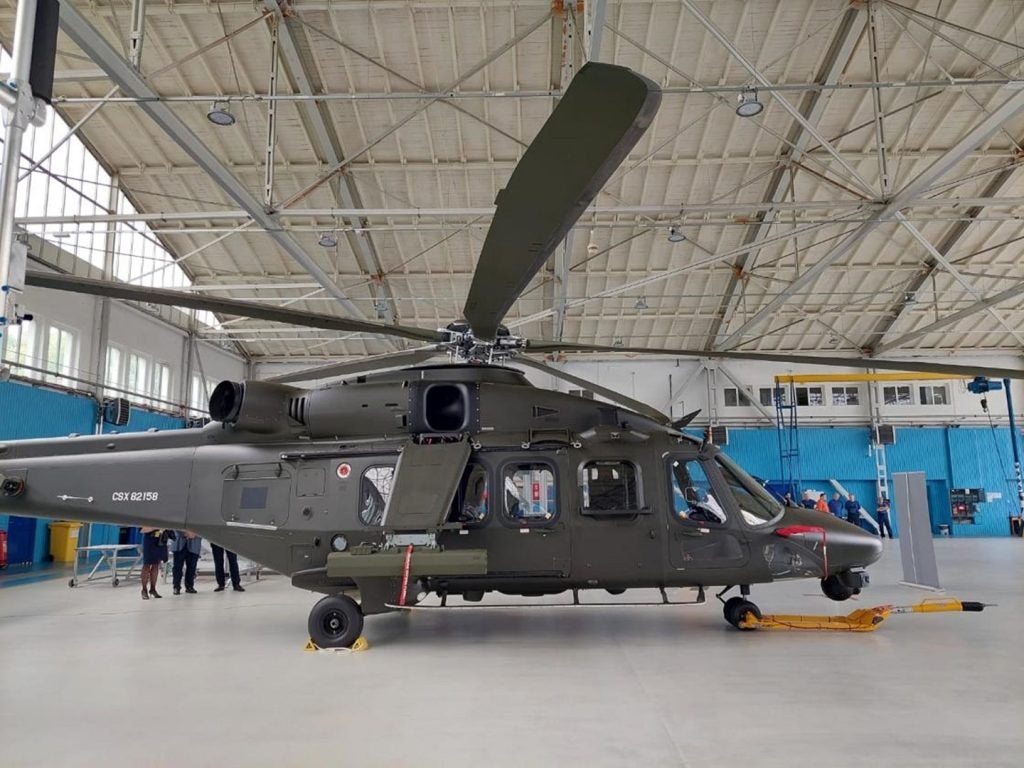
Modern military shelters are a far cry from the simple tents of past times, and nowhere is this more apparent than in some of the recent developments in the provision of frontline medical and emergency services.
For soldiers on operational deployment in the world’s harshest and most hostile environments,the reassurance afforded by the presence of adequate support facilities is hard to overstate. As one soldier of Scotland’s Black Watch regiment – recently returned from Afghanistan – puts it: “you don’t want to see the inside, but it’s good to know they’re there.”
Providing the necessary resources for medical teams to carry out surgical procedures with anything approaching the equivalency of care possible in a fixed-base hospital is clearly a major challenge. But there are others too: the need to deal with possible incidents of chemical, biological, radiological and nuclear contamination (CBRN), for instance, has undoubtedly grown – a recent analysis by Visiongain put the total CBRN defence market at $7.9bn in 2009, and this is expected to increase through to 2020.
It is small wonder that decontamination shelters are also coming under the spotlight. Even aside of their possible use in conflict, military expertise – and personnel – are likely to be involved in the response to any terrorist attack involving such agents on civilian targets.
All military shelters represent an essential compromise between ease of transport, speed of deployment, ruggedness, durability and, of course, the ability to do the intended job while providing adequate protection from both in-theatre threats and the local climate. Striking the right balance, clearly, was never going to entirely straightforward, and adding specialist needs on top doesn’t make it any simpler.
Mobile and modular shelters
How well do you really know your competitors?
Access the most comprehensive Company Profiles on the market, powered by GlobalData. Save hours of research. Gain competitive edge.

Thank you!
Your download email will arrive shortly
Not ready to buy yet? Download a free sample
We are confident about the unique quality of our Company Profiles. However, we want you to make the most beneficial decision for your business, so we offer a free sample that you can download by submitting the below form
By GlobalDataField hospital facilities, in particular, have seen enormous demands made of them. As a result, mobile medical shelters routinely push the envelope across the spectrum of physical requirements – portability, ruggedness and reliability – while also predicating rapid installation, intrinsically high levels of hygiene and the ability to accommodate all the necessary equipment ergonomically within the structure. The shape of modern deployment also places an additional premium on flexibility and responsiveness, something that has been reflected in shelter design by a move towards enhanced modularity.
Zeppelin Mobile Systeme – a direct descendent of the eponymous airship manufacturer – is among the world’s pre-eminent companies when it comes to meeting the demanding challenges of this sector. One of the first shelter-makers to use the lightweight aluminium-sandwich construction, Zeppelin offer everything from compact 10ft emergency shelters to modular hospitals based around an extendable 20ft unit design. Zepellin’s products can found in more than 40 countries around the globe, and have a history of service in a range of international military operations, including Bosnia, Kosovo and Afghanistan. Its shelters have a proven lifespan of 30 years – a reassuring robustness which has served both medics and patients well.
There are several advantages to be gained from a rigid shelter in this role. Sterilisation is a simpler task, and vital time can be shaved off deployment – often a critical factor – by the ability to transport the necessary equipment in situ. Even the company’s expandable shelters can be deployed within minutes, principally due to the in-built facility for equipment installation on the floor and ceiling of the central part of the shelter. When decisive intervention and fast access to life-saving trauma stabilisation counts, those minutes matter.
The future medical shelter system
Since the first Gulf War, the US Army’s forward surgical teams have fielded deployable rapid assembly shelter systems, providing medical facilities that can be quickly installed in a combat zone. These shelters can be packed to around 2% of their deployed size and erected by four soldiers without the need for special tools, and their versatility and reliability have earned them a place as one of the standard systems used by US forces around the world. These are the same factors that have shaped the thinking behind the future medical shelter system, an ambitious project that seeks to extend the boundaries of battle-zone care even further.
of their
deployed size and erected by four soldiers without the need for
special tools.”
The programme is a multifaceted approach to the development of advanced softwalled and rigid shelters for forward-deployed medical personnel, centred on two primary objectives. First, it aims to provide a self-contained emergency response solution for forward surgical teams; second, replace the deployable medical system operating room shelter. Both tasks reflect the current emphasis on low-weight, high-portability and ease of deployment.
Development and testing is underway on a second-generation prototype from Mobile Medical International Corporation (MMIC), and an expandable, chemically and biologically hardened, combined tent and container concept – the “tentainer” – from EADS-Dornier. Procurement preliminaries are expected during the 2010 financial year.
Deployable hospitals
Much of the underpinning technology is already in service among the armed forces of Nato and its allies around the world. The 21st Century Military Hospital System family of deployable shelters from MMIC comprises three main platforms: the Mobile Surgical Unit, an expandable ISO shelter; the Universal Support System, a non-expandable ISO hardwall container with two integrated airbeam softwall shelters; and the trailer-mounted Mobile Single Pallet Unit.
Designed for autonomous operations, each shelter is a self-sustaining system, fitted with integrated power, environmental control and lighting. This establishes a protected environment almost immediately, without the need for additional support.
EADS’s Future Combat Support Hospital is a similarly advanced and highly mobile offering. It can be readily transported by land, air or sea, and is based on the company’s field-proven TransHospital modules.
The completed facility is created from building-block modules based on 8ft by 8ft by 20ft ISO hardwall containers and inflatable softwall shelters. These are connected by walkways with airtight and watertight seals.
Medical equipment is pre-integrated into the container and mountings for shelves, and equipment and hardware are built-in, along with all the necessary components for power distribution, lighting, communication and environmental control.
These state-of-the-art shelters, and others like them, are successfully helping to bring the full range of medical services, treatment and diagnostics closer to the frontlines than ever before.
Catering for decontamination
Many of these facilities have systems to isolate people who have been contaminated with biological or chemical agents, but allow medical personnel to treat them without the risk of exposure themselves. The growing need to be able to deal with chemical, biological, radiological and nuclear threats on a larger scale, however, calls for something else.
Although contamination in the wake of a terrorist incident is the most conspicuous example, increasingly it is controlling the spread of disease – either in the relief effort following a natural disaster or as a result of a population displaced by fighting – that taxes military thinking. Unsurprisingly, decontamination shelters have been driven even further up the procurement agenda as a result.
“Epidemics present a considerable danger to everybody,” explains Bernd Wenzler, CEO of Defence Electronics, part of the EADS team that recently demonstrated the efficacy of a revolutionary decontamination system to the UK Ministry of Defence.
Their Transportable Modular Aerosol-based Decontamination and Disinfection System – developed jointly with Pursuit Dynamics – uses a unique aerosol dispersion technology that produces droplets of around one micrometre in size. At this diameter, disinfectant liquid behaves almost like a gas, enabling optimised distribution, rapid application rates and efficient use of chemicals.
In many respects, systems such as this epitomise the growing crossover between the traditional war-fighting and the military’s burgeoning involvement in civil emergencies. If, as Wenzler says, this is “an ideal example of how modern technologies can be used for increasing the safety of all of us in everyday life”, then like that Black Watch private, we should all be glad to know they are there.







